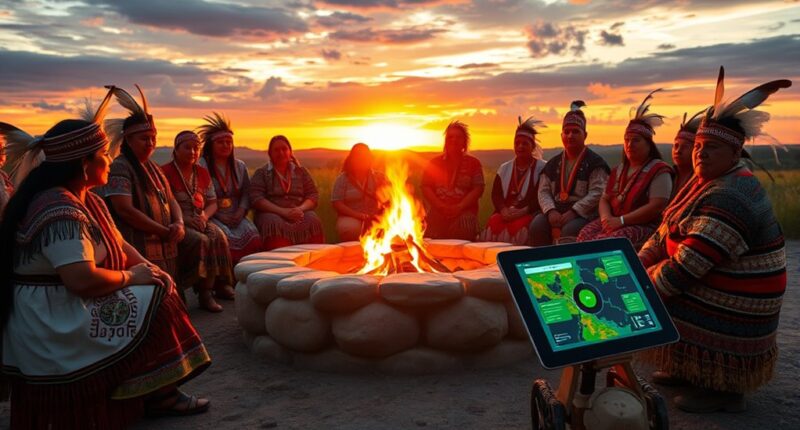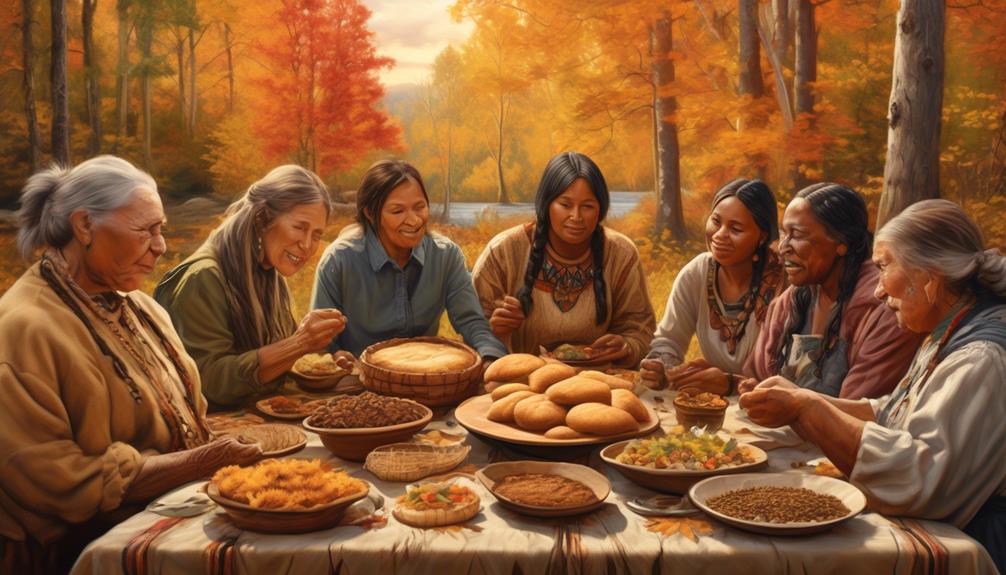Indigenous data sovereignty lets you control how your community’s digital information is collected, stored, and shared, protecting your cultural identity and self-determination. It prevents outsiders from exploiting or misrepresenting your cultural expressions, language, and traditional knowledge. By managing your digital assets, you maintain dignity and authenticity, ensuring your community’s voice remains strong. Keep exploring to discover how embracing digital rights helps preserve your heritage and promote respectful partnerships.
Key Takeaways
- Indigenous data sovereignty empowers communities to control how their digital information is collected, stored, and shared.
- It prevents misrepresentation, cultural theft, and exploitation of Indigenous cultural data in digital spaces.
- Digital sovereignty supports the preservation of languages, traditions, and cultural practices through controlled digital assets.
- It fosters respectful partnerships and protocols aligned with community values and cultural integrity.
- Protecting digital rights ensures communities maintain self-determination and safeguard their cultural heritage in the digital age.

Have you ever considered who controls the data about Indigenous peoples and their communities? In today’s digital age, this question is more critical than ever. Digital rights are fundamental to ensuring that Indigenous communities maintain authority over their information, images, and cultural expressions. Without proper safeguards, this data can be exploited, misrepresented, or misappropriated, leading to erosion of cultural identity and sovereignty. Indigenous data sovereignty is about empowering communities to decide how their data is collected, stored, and shared, giving them control over what belongs to them. It’s a way to protect their digital rights, ensuring they’re not passive subjects of data collection by external entities but active participants in managing their digital footprint.
Controlling Indigenous data safeguards cultural identity and sovereignty in the digital age.
By asserting data sovereignty, Indigenous communities can safeguard their cultural preservation. Digital platforms hold vast amounts of data—photos, stories, language recordings, and traditional knowledge—that are essential to their cultural identity. When this data is mishandled or taken without consent, it can lead to cultural misrepresentation or even cultural theft. Indigenous data sovereignty initiatives aim to set clear boundaries and protocols for data use, ensuring that community members have a say in how their cultural expressions are shared and preserved online. This control helps prevent the commodification of their cultural heritage and allows communities to maintain their dignity and authenticity in digital spaces.
Furthermore, Indigenous data sovereignty supports the preservation of languages and traditions that might otherwise be lost. Digital tools provide new avenues for keeping these traditions alive, but only if communities retain control over their digital assets. When Indigenous peoples oversee their data, they can develop tailored digital repositories that reflect their values and priorities. This proactive approach not only helps preserve their culture but also reinforces their sovereignty in the digital domain. It sends a clear message that their cultural practices are not commodities or curiosities for outsiders but essential aspects of their identity that deserve respect and protection.
Additionally, integrating Cultural Intelligence principles can enhance understanding and collaboration between Indigenous communities and external entities, fostering respectful and effective data management practices.
Ultimately, protecting Indigenous digital rights through data sovereignty isn’t just about technology; it’s about respecting the inherent rights of communities to self-determination. It’s about ensuring that they have the power to decide how their cultural data is used, shared, and protected. By doing so, Indigenous communities strengthen their cultural preservation efforts and assert their sovereignty in a world increasingly shaped by digital information. Taking control of their data affirms their voice, preserves their heritage, and safeguards their future in the digital age.
Frequently Asked Questions
How Does Data Sovereignty Influence Resource Management?
Data sovereignty influences resource management by empowering your community to control its data, ensuring decisions reflect your needs and values. This control fosters community empowerment and safeguards cultural resilience, preventing external misuse or exploitation. When you manage your data, you can allocate resources more effectively, support sustainable practices, and maintain cultural integrity. Ultimately, data sovereignty helps you protect your community’s resources while strengthening your identity and resilience in the digital age.
What Legal Frameworks Support Indigenous Data Rights Globally?
Think of legal frameworks as the anchors that secure your community’s digital ship. Globally, treaties like the United Nations Declaration on the Rights of Indigenous Peoples (UNDRIP) support Indigenous governance and cultural preservation, recognizing your right to control data. These laws empower you to protect your traditions, land, and identity in the digital age, ensuring your community’s voice remains strong and autonomous amid rapid technological change.
How Is Data Sovereignty Integrated Into Traditional Knowledge Preservation?
You integrate data sovereignty into traditional knowledge preservation by ensuring communities control their cultural information and knowledge inheritance. This approach safeguards against misappropriation, allowing you to share knowledge on your terms. By establishing data governance that respects cultural protocols, you maintain the integrity of your traditions and enable future generations to access and learn from their heritage securely, reinforcing the importance of cultural preservation in the digital age.
What Challenges Exist in Implementing Data Sovereignty Policies?
Implementing data sovereignty policies challenges you to balance cultural preservation with community autonomy. You face obstacles like limited technical infrastructure, funding shortages, and steering legal complexities across jurisdictions. Ensuring respectful data management that honors Indigenous knowledge and rights requires ongoing collaboration and trust. These challenges test your ability to uphold community control while protecting cultural heritage, making policy development a delicate but essential process for safeguarding Indigenous communities‘ digital sovereignty.
How Can Technology Enhance Indigenous Control Over Data?
Ever wonder how technology can empower your community? By leveraging digital archiving and cultural mapping, you gain control over your data, preserving your heritage and stories on your terms. These tools enable you to manage, share, and protect your information, ensuring your community’s sovereignty remains intact. Isn’t it time you harnessed technology to safeguard your cultural identity and strengthen your control over data?
Conclusion
By embracing indigenous data sovereignty, you become a guardian of your community’s story, shielding it from misinterpretation and exploitation. Like a mighty oak standing firm against storms, your rightful control nurtures trust, resilience, and cultural revival. In this digital age, safeguarding your data isn’t just protection — it’s a powerful act of reclaiming your identity, ensuring your voice echoes through time. Stand tall, knowing your community’s future is rooted in your unwavering stewardship.









